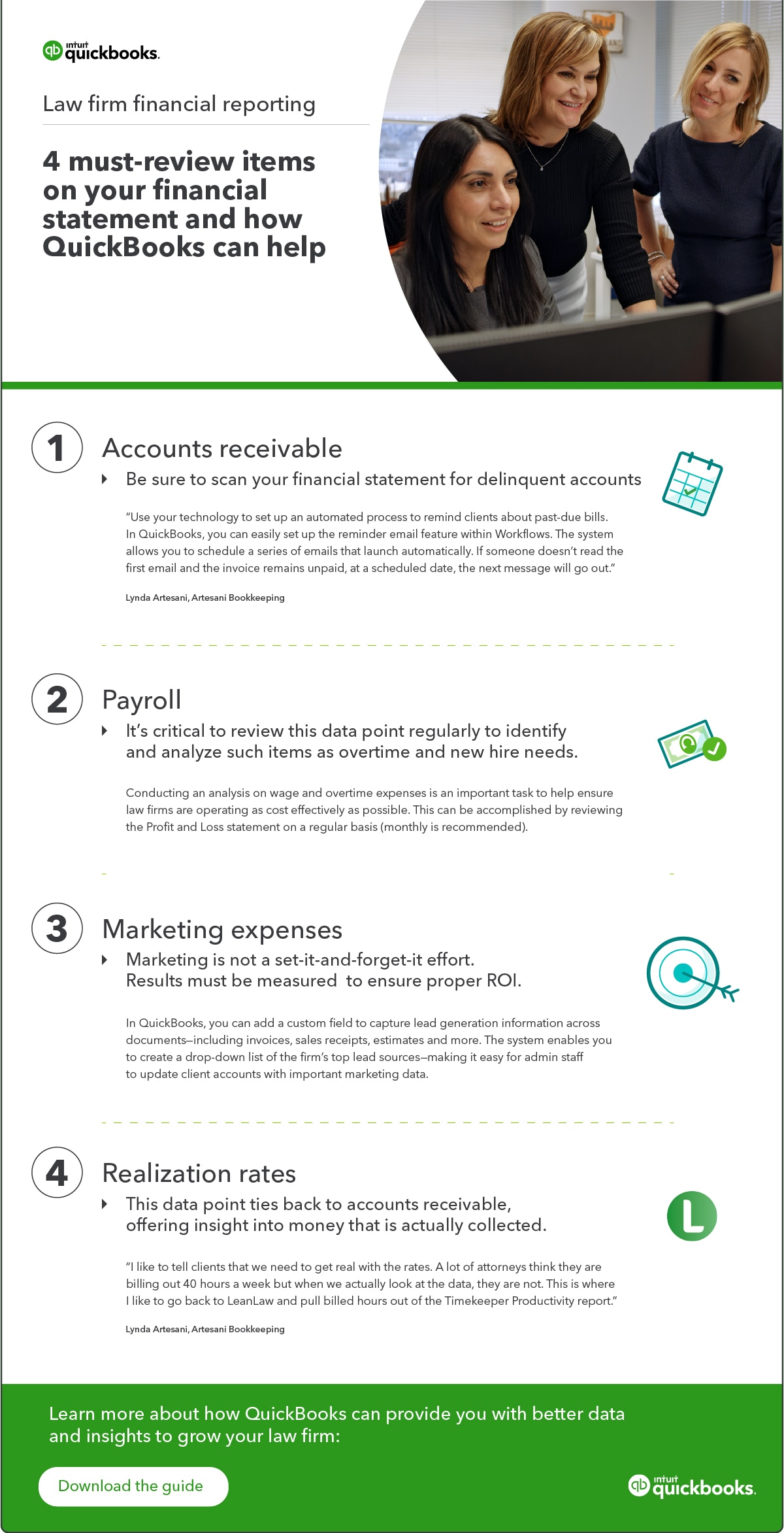3. Marketing expenses
In Artesani’s experience, marketing is typically one of the larger expenses that shows up on a financial statement. Like any business, growth is a key objective. Marketing is part of the formula to help accelerate financial success and is a necessary operating expense for most law firms. Artesani explains: “Firms tend to just throw large amounts of money at marketing and then assume it’s working. That’s not always the case, so they really need to look more closely at this expense and compare it against results.”
Marketing is not a set-it-and-forget-it effort. Firms must measure results to ensure proper return on investment. Artesani helps her clients automate this process.
“Using QuickBooks, you can create a custom field on the invoice that will capture the lead source. This data flows back into QuickBooks so when you onboard the client, it shows how they heard of the firm, for example, from a marketing campaign or online ad. Now you have data that connects the lead source with the dollar amount of the client account so you can intelligently evaluate if marketing efforts are working.”
4. Realization rate
This information ties back to AR, offering insight into money that is actually collected. Firms have long adhered to the billable-hour pricing method with the assumption that hours billed equal cash inflow. In reality, after reviewing financial statements, realization rates are often lower than expected because of overdue or delinquent invoices. This can be an eye-opener for partners and a big motivator to transition to a value-pricing method.
Based on years of experience working with law firms, Artesani cautions, “Typically, when we really dig into realization rates, often we find it’s only about a third of what the firm billed has actually been collected.”
This point alone is a strong incentive to get out of what Artesani calls “time mode”:
“The goal is to move firms away from billable hours and get them to adopt a subscription model. They can make so much more money this way.” She adds “If you look at the Clio 2020 Legal Trends Report under realization rate, stats show that, on average, attorneys only bill 2.5 hours of a typical 12.5 hour day.”
Final thoughts…
While not an exhaustive list, this guide provides law firms with sound advice and insights into what to look for in their financial statements. Reviewing this key information each month gives partners and lead executives critical knowledge about their firm’s financial health, sustainability, and potential future risks.
Learn more
QuickBooks Online Advanced can provide you with better data and reporting insights to grow your law firm.
Book a product tour
Take your legal firm to the next level with QuickBooks Online Advanced. Book a product tour now.













